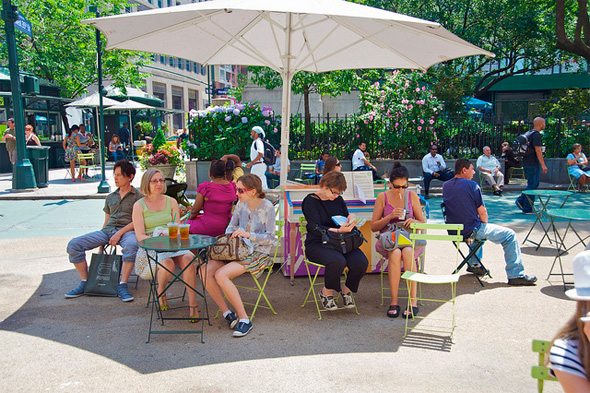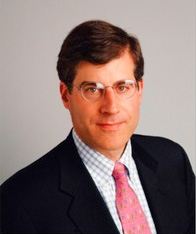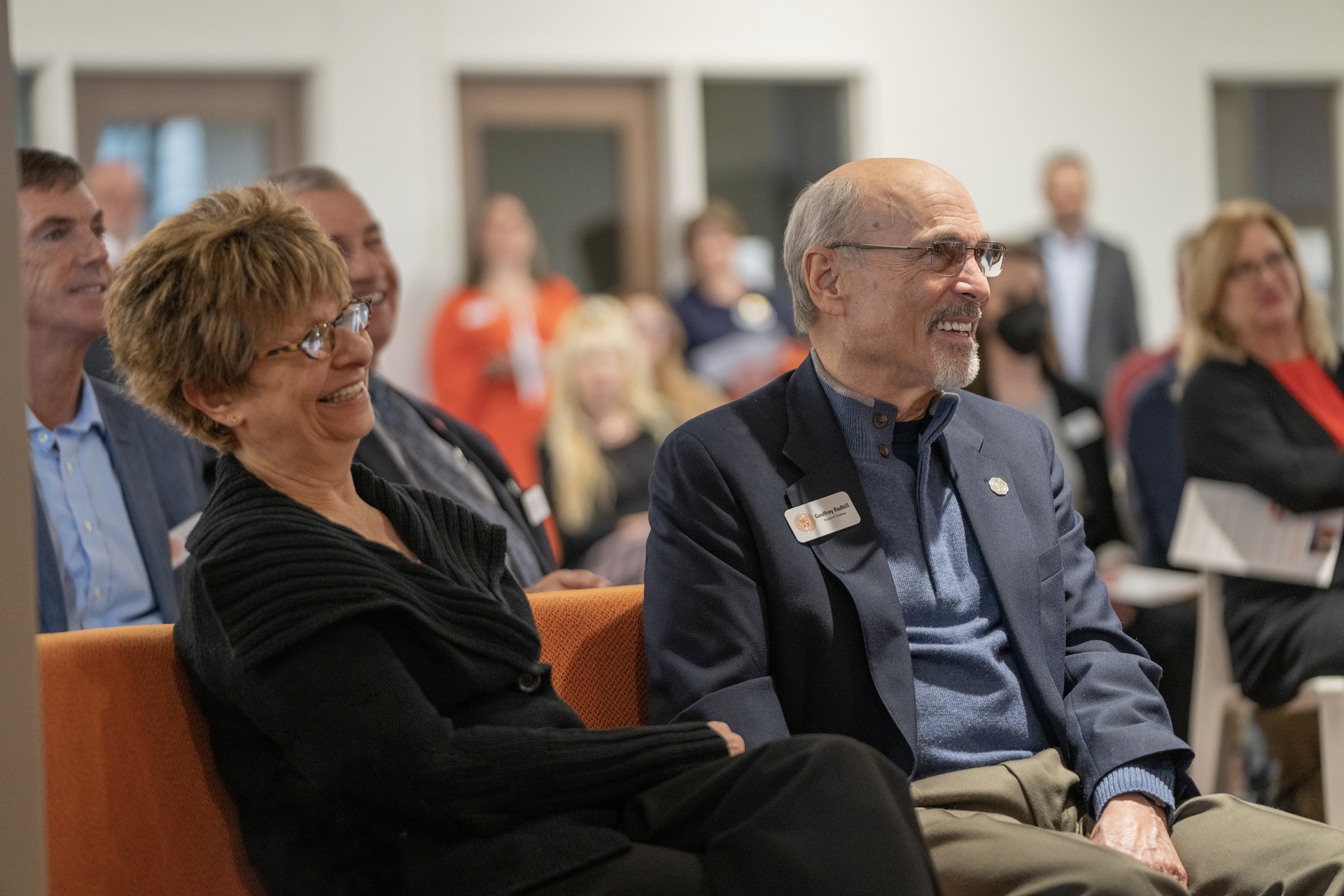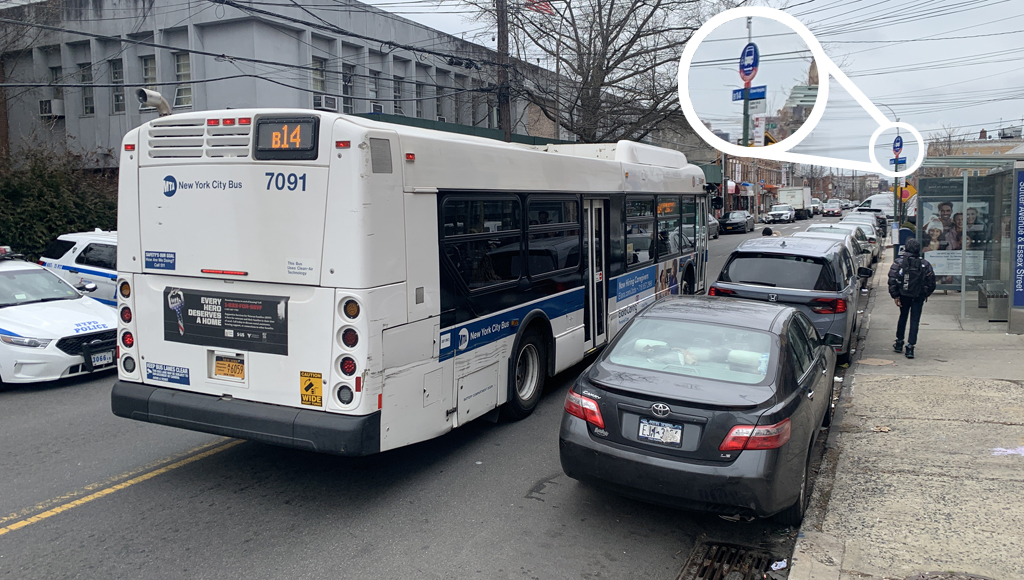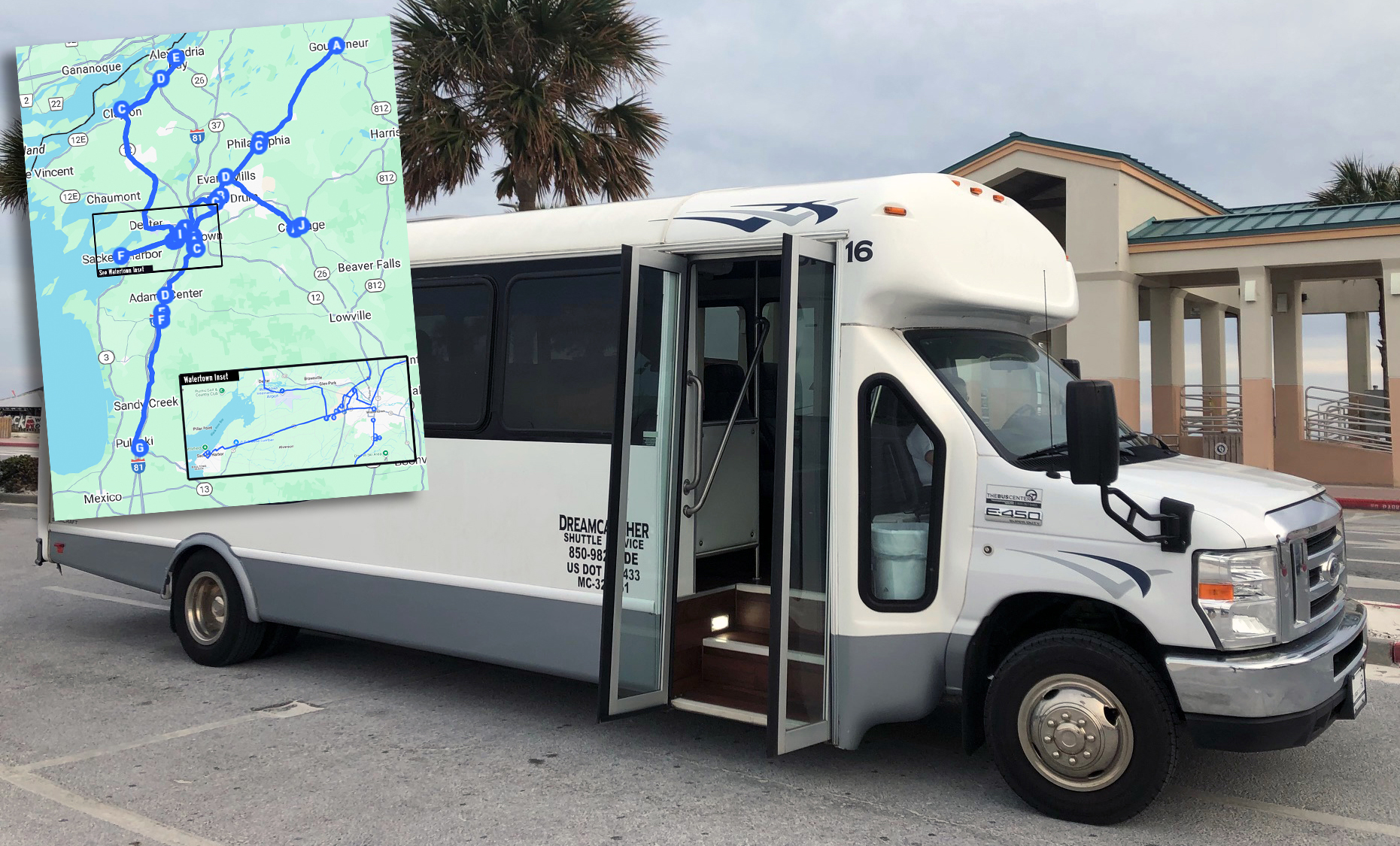Before Dan Biederman came to Bryant Park, there were no movable chairs, no free movies on summer evenings, no kiosks selling sandwiches and refreshments. No lunch time crowds and not much in the way of civic life or social activity, either. There was, basically, an open-air drug market in the New York Public Library's backyard.
In 1980, Biederman co-founded the Bryant Park Restoration Corporation, beginning a long career in public space management. He blended a business executive's managerial expertise with an urbanist's sense of what makes places work -- the latter honed at the side of pioneering public space analyst William "Holly" Whyte. Property owners in other parts of Midtown sat up and took notice of his success at Bryant Park, and by the 1990s he was also leading the 34th Street Partnership and the Grand Central Partnership. Today he continues to oversee the Bryant Park Corporation and the 34th Street Partnership, while also bringing lessons from his New York business improvement districts to cities all over the country.
A firm believer in the importance of a quality pedestrian environment, Biederman has advanced a number of street safety and public space improvements over the years. In 2009, NYC DOT's reclamation of Broadway for pedestrians and cyclists augmented two of the 34th Street Partnership's big public space success stories: Herald Square and Greeley Square. When the city announced the changes would be permanent last year, Biederman stood in front of the TV cameras and said, "This is a 21st century idea."
Streetsblog recently sat down with Biederman at his Sixth Avenue headquarters, across from Bryant Park, to talk about the transformation of Broadway, the 34th Street Transitway, and how New Yorkers adjust to change. The first installment of the edited interview is below.
He started off our discussion by noting that critics of Transportation Commissioner Janette Sadik-Khan have managed to command more attention than her supporters.
Ben Fried: Any theories as to why?
Dan Biederman: First, cab drivers are terrible participants in public fora. They don’t know shit because they’re on the phone all day long, yet they’re able to drive. The fact that they’re also, in their minds, better transportation analysts than people who went to school in that subject and have all kinds of citywide roles, baffles me. But the view of most business people is that you can count on cab drivers to tell you what the right answer is. I think that’s crazy. They will tell you that they’re annoyed that something isn’t going their way, but they don’t have the broader view.
We don’t pay that much attention to Steve Cuozzo. I think he’s a great real estate reporter but he doesn’t know this field.
They don’t understand because they over-emphasize the inconvenience that is experienced right after a change. They don’t understand that things work themselves out because people eventually get smart, including them. If 34th Street had been closed from Fifth to Sixth [for the transitway plaza], it defies belief that cab drivers would continue driving right into the blockage and therefore there would be horn-honking at Seventh Avenue and Sixth Avenue from now till the rest of time.
But if you could go into the mind of the average building manager in midtown Manhattan, that’s what they’re picturing: “Cab drivers are right because if you close something there will be horn-honking and trouble.” So we can’t make transportation policy that way. We have to go with the better-informed people who either are consulting or working for DOT.
BF: As president of a few Midtown BIDs, you have to both represent the property owners that you’re talking about and advocate for change to some degree. How do you end up balancing that?
DB: I usually try to calm them down by saying, “First, you need to understand this very arcane field of traffic.” People confronted with new regulations will alter their behavior, and it’s not as simple as saying if 34th Street has less traffic on it, there’ll be more traffic on 35th and 33rd and 36th and 32nd. Things are not that simple.
The second way to walk that tightrope is, very often the owners who are upset with some of Janette’s plans have specific problems, and I find the agency fairly responsive to those very specific problems. For example, the 34th Street transitway, we said a number of times to the DOT, there are three or four really specific points being raised against you. One is, Vornado has a garage that enters out into the eastbound lane of 34th Street now. What do we do about that? The Empire State Building has a concern about tourist buses. Third was Macy’s and their parade. Fourth was retail on the north side of the street between Seventh and Eighth, raised by the owner of the Pennsylvania Building, 225 West 34th. Plus we wanted 33rd Street opened westbound. [It is currently interrupted by pedestrian space at Broadway.]
If you can make those people happy, all that will be left is the general concerns, as far as our district goes, about curb access, and I think two or three of those problems have disappeared. I don’t hear the Empire State Building squawking. Macy’s is satisfied because of the elimination of the Fifth to Sixth pedestrianization, although I never was 100 percent sure why that hurt their parade plans.
So those are the five points that were left after all the shouting and hubbub. We don’t pay that much attention to Steve Cuozzo. I think he’s a great real estate reporter but he doesn’t know this field. He just loves to scream and rant about it.
BF: I think it would help to clarify exactly who the BIDs speak for. Is it entirely property owners? Is it retailers?
DB: Owners, tenants and in some cases the retailers are the owners. Macy’s owns their real estate. So owners and tenants, which includes retail and office tenants and office owners and the employees, theoretically, in those buildings. We try to speak for all. The people that pay the freight are the owners and tenants.
With the initial plans come screaming and yelling. A lot of times it’s not really accurate.
Now I try to lead on this because I feel after 30 years of doing this job, I’m pretty well qualified to steer the district’s point of view in a certain direction. When people challenge me on whether this is good for the district who are influential owners and tenants, I say, “Are you telling me you would like to go back to Broadway the way it was two years ago with lanes of traffic rushing down past Macy’s and Greeley Square? I’m convinced you don’t.” The real estate community is starting to come around.
BF: What does that look like? How skeptical were they in 2009 compared to today?
DB: A lot of this skepticism bubbles up from below. The principal in the past was normally more open to changes than somebody three levels down, who’s the building manager. Building managers are as stubborn about change in the street pattern as taxi drivers are. They sound very much like taxi drivers when they talk about this stuff. So with the initial plans come screaming and yelling. A lot of times it’s not really accurate.
For example, “Traffic will continue heading right in that direction and there will be horrible traffic jams.” Well, now we’ve had Broadway Boulevard, as we call it, in for a long time. What’s happened? Sixth Avenue is clearly moving faster. There’s no question about it at Herald Square. Traffic is moving better. At Seventh Avenue there’s debate. [Janette's] numbers show a tiny decline in speed. The screamers say that it’s much worse. I think her numbers are probably accurate. It’s a tiny bit worse.
I’m starting to hear some advanced property owners say that they think Broadway retail is more valuable than it was before.
Broadway is a pleasure because if you walk across Broadway – when you leave this meeting, you ought to go west on Broadway at 40th Street at rush hour, it’s just fantastic. In the old days you’d have to rush across. You’d think you were going to be run over from cars rushing through Times Square. They finally got through the Times Square bottleneck and they’re going to race down and make up the time.
Now we have a quieter environment, much better for retail. People walking in a New York manner in all different directions. It’s a pleasure.
I kidded Janette. I said when I go past 40th and Broadway, if I’m carrying something, I start reading. She said, you shouldn’t read and cross streets. But I said, that’s how confident I am the traffic has calmed. If a car’s coming, it’s coming at 12 miles an hour so I can take evasive action. I’m enjoying this immensely. Traffic has been calmed by this move. There are very few cars going between 40th Street and 35th Street right now.
BF: How do you measure success? Are there ways to gather information that the BID is pursuing?
DB: We haven’t been scientific about it but we’re pretty good urbanists at this point, so we know and improve the pedestrian environment when we see it. We’re really good at this. There’s no doubt the pedestrian environment is better. If you can get that at the expense of only a tiny bit of decline of one avenue and a great upgrade in the other, then you’ve got a success.
Now I am hearing from some people – they think Ninth Avenue is worse. I don’t. The parts of Ninth Avenue that they claim are worse are not in my district so I have not stood on the corner of Ninth Avenue and 39th Street and analyzed it. My traditional view is the Lincoln Tunnel decides whether Ninth Avenue is bad or not. Because anybody on Seventh going south knows, if they’re a New Yorker, that it’s not a great idea to go down Ninth. If you’re coming from the west side and you’re trying to get to Chelsea, Eleventh might be a good answer but Ninth, everybody thinks Lincoln Tunnel at almost all hours of the day.
To me, at least the stuff that affects us most – Sixth better, Seventh at least close, maybe a tiny bit worse, pedestrian environment upgraded. This is a better deal for our district. I’m starting to hear some advanced property owners say that they think Broadway retail is more valuable than it was before the change, including the owners of this building. [Blackstone owns 1065 Sixth Avenue.] They own a lot of Broadway buildings – they said this change has led to measurable increases in retail rents on Broadway.
Just like two-way traffic is better for retail, 12 mile-an-hour traffic is better for retail. It’s completely accepted by everybody who knows anything about urban planning.
Coming up in part two of the interview: Biederman discusses the caliber of NYC DOT under Janette Sadik-Khan and reveals the ultimate example of NYC provincialism.
